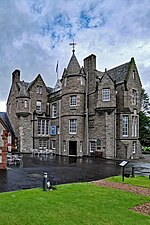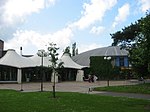Scone Abbey

Scone Abbey (originally Scone Priory) was a house of Augustinian canons located in Scone, Perthshire (Gowrie), Scotland. Dates given for the establishment of Scone Priory have ranged from 1114 A.D. to 1122 A.D. However, historians have long believed that Scone was before that time the center of the early medieval Christian cult of the Culdees (Céli Dé in medieval Irish meaning "Companions of God"). Very little is known about the Culdees but it is thought that they may have been worshiping at Scone from as early as 700 A.D. Archaeological surveys taken in 2007 suggest that Scone was a site of real significance even prior to 841 A.D., when Kenneth MacAlpin brought the Stone of Destiny, Scotland's most prized relic and coronation stone, to Scone.
Excerpt from the Wikipedia article Scone Abbey (License: CC BY-SA 3.0, Authors, Images).Scone Abbey
Gilsay Place, Perth North Muirton
Geographical coordinates (GPS) Address Nearby Places Show on map
Geographical coordinates (GPS)
| Latitude | Longitude |
|---|---|
| N 56.424722222222 ° | E -3.4358333333333 ° |
Address
Scone Palace Grounds
Gilsay Place
PH1 3DF Perth, North Muirton
Scotland, United Kingdom
Open on Google Maps







